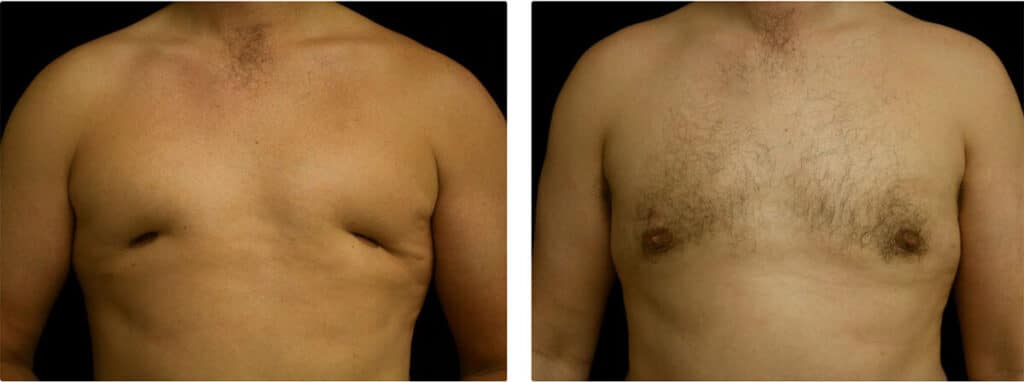What Is A Crater Deformity After Gynecomastia Surgery?

As with any procedure, complications are a possibility with gynecomastia surgery. If you’ve already undergone surgery with unsatisfactory results, it can be upsetting to now consider your options for revision surgeries. Picking the right revision surgeon is key to getting it right the second time – and if you haven’t yet gone through with gynecomastia surgery, it’s essential to know what pitfalls to avoid when choosing a board-certified plastic surgeon. Here’s what to know about crater deformities and how Dr. Miguel Delgado can revise or help avoid them altogether.
What is a Crater Deformity?
A crater deformity occurs when too much tissue is removed during gynecomastia surgery. It usually looks like a small indentation or depression underneath the nipple, and it’s a common complication of gynecomastia surgery. Unfortunately, a crater deformity typically requires a revision gynecomastia surgery after the initial procedure. Crater deformities can be a frustrating experience for gynecomastia patients who already experienced contour irregularities in the form of male breast tissue, but a board-certified plastic surgeon specializing in secondary gynecomastia surgery can help you understand your results and aim for a better outcome.

What Causes Crater Deformities?
A crater deformity occurs when a plastic surgeon removes too much breast gland tissue underneath the areola without sufficiently blending in the surrounding fatty tissue. Dr. Delgado performs this step with liposuction. It’s often the first step in gynecomastia surgery, depending on the density of the tissue. Once complete, it gives Dr. Delgado an idea of how much breast tissue must be removed underneath the nipple for best results.
The best way to fix a crater deformity is by avoiding it altogether. It’s common for plastic surgeons who don’t specialize in gynecomastia surgery to overdo it when removing breast tissue. Dr. Delgado performs gynecomastia treatment more than any other surgical procedure each year and has extensive training in both initial and revision gynecomastia surgeries. He can avoid complications and help you achieve your aesthetic goals the first time with your procedure.
A couple different techniques can be used to correct a crater deformity after gynecomastia surgery. A board-certified plastic surgeon with unrivaled expertise in male breast reduction can help you select the best possible option.
Fat Transfer for Crater Deformity
A revision gynecomastia surgery using fat transfer is often the best way to correct a crater deformity. A secondary gynecomastia surgery should only be performed after you’ve fully recovered from your initial male breast reduction. Fat transfer (also called fat injection or fat grafting) involves collecting fatty tissue through liposuction from an area of the body that contains excess (such as the stomach). The excess fat is then purified and injected into the subcutaneous area of the chest to fill in the crater deformity. This procedure can typically be performed using local anesthesia.
Fat Flap Technique for Crater Deformity
The fat flap is a useful technique, albeit more invasive than fat transfer. It involves moving a flap of fat tissue from a nearby chest area while still attached to its blood supply to fill in the depression left by the breast tissue. This ensures a good chance of success when it comes to the survival of the tissue, but requires a more involved revision surgery process.
Schedule a Consultation
About 45% of Dr. Delgado’s gynecomastia cases involve corrective surgery. He also performs over 150 gynecomastia procedures each year, achieving incredible, long-lasting results. He offers in-depth knowledge of crater deformities and what causes them, as well as how to achieve a better result with revision surgery.
If you need a fat grafting or fat tissue flap procedure for gynecomastia, Dr. Miguel Delgado can help. During a consultation, he will help you make an informed decision about your options. And, if you want to avoid complications like a crater deformity, then choosing an experienced, board-certified plastic surgeon such as Dr. Delgado is the best first step. To get started, contact our San Francisco office today by calling or filling out our online form.
